Reading the title of the two-part exhibition at Robert Kananaj Gallery I’ve found it interesting, as belonging is a major issue in our society. But when I went to see the show and talked to gallery owner/curator Robert Kananaj, I realized how wrong I was since I totally misunderstood the title. He completely turned around the meaning of belonging and instead of focusing on its social relations he went back to the roots of the problem, the person. A Journey to Belong for him starts with the individual and not with the society. We waste our energy in focusing so much on what supposedly significant, said Kananaj, instead of giving ourselves to what is really important to us as human beings. Kananaj wants to create an awareness of the “insignificant”. Society could wait with it’s demanding, sometimes even depressing, pressure. Finding ourselves is the first step to belonging to anything or anywhere.
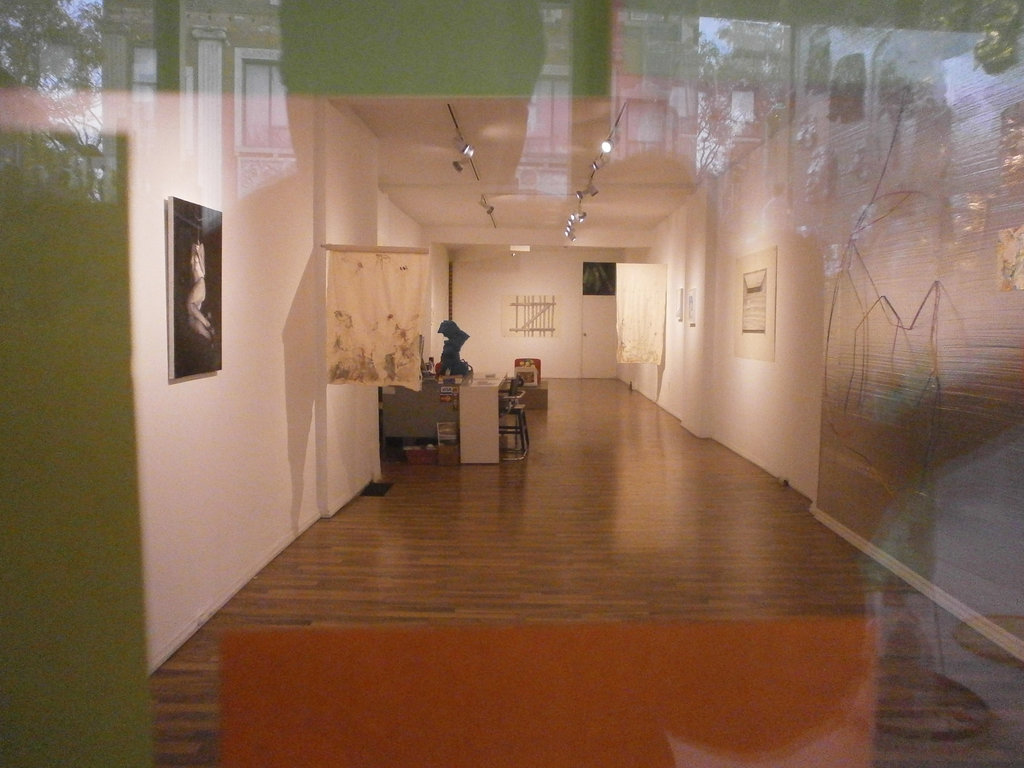 Installation view of Part 2. Courtesy of Robert Kananaj Gallery
Installation view of Part 2. Courtesy of Robert Kananaj Gallery
So the Journey starts inside, finding yourself – who you are – going back to the roots, and then slowly recognizing yourself as an individual. Then you can belong to yourself, contemplate your newly found character, maybe build it further for a while, and then, if you want, reach out to others and the society.
 Lula Motra, Embroidery. Courtesy of Robert Kananaj Gallery
Lula Motra, Embroidery. Courtesy of Robert Kananaj Gallery
It is indeed a very interesting theme to cover. The first exhibition was dedicated to Lula Motra’s work. This was the first solo exhibition of the Italian based Motra with drawings, embroidery and sculptures. She is a total outsider, with no formal art training. She started three years ago with drawings, then embroidery and most recently assembly like sculptures. Embroidery is one of the oldest art forms practised traditionally by women. It requires skills, discipline and persistence to finish something like an altar cover or even a bed cloth. Motra wasn’t influenced by any school or style. Her sensitive hands, guided by her special imagery, created a one of-a-kind-piece. There are large areas of empty spaces surrounded or disrupted by light colored silk lines depicting flowers, lakes or city maps mainly in abstract forms; a very unusual but also very beautiful embroidery. Motra’s drawings are colored pencil compositions also mixing realistic images like a piazza with abstract elements. They are very colorful and full of emotion – great fun to look at and try to decode. Motra’s drawings and embroideries are visual diaries of her state of being, recording her inner journey.
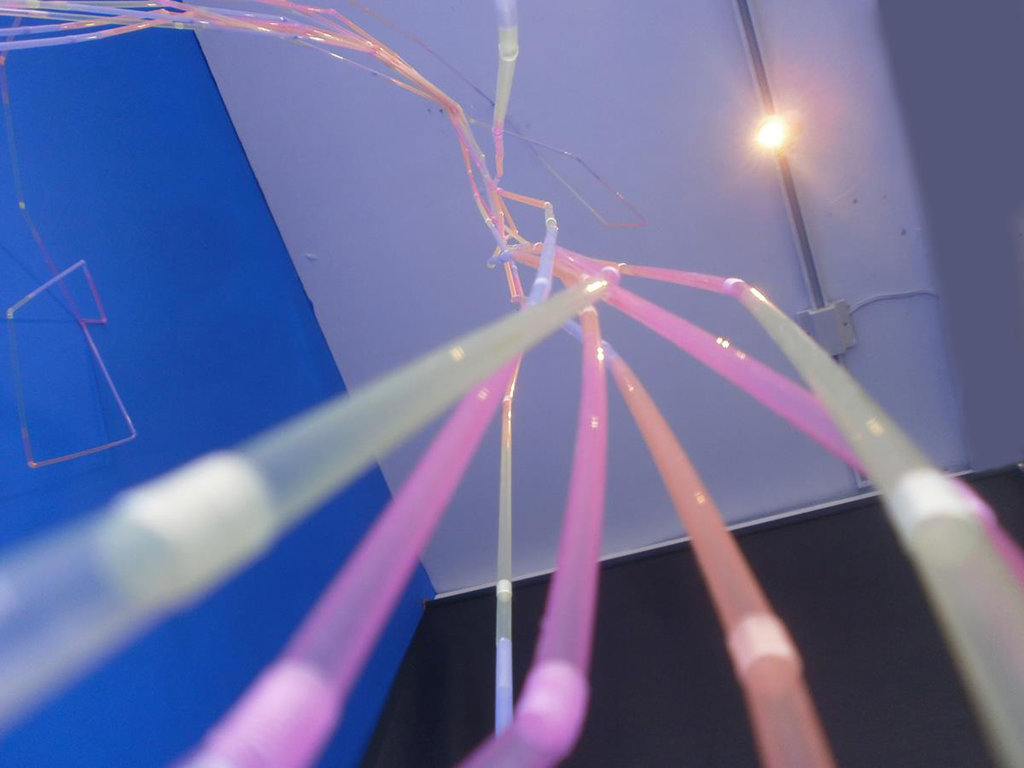 Lula Motra installation from Part 1. Courtesy of Robert Kananaj Gallery
Lula Motra installation from Part 1. Courtesy of Robert Kananaj Gallery
Kananaj put up the second show in an unusual way, since some of Motra’s pieces from Part 1 continue into Part 2. A few of her drawings and embroideries are there and her tubes made of plastic straws are still moving over the gallery’s walls. Three more artists are included in Part 2: Torsten Richter, Hollis Alexis Baptiste, and Luca Reffo. Torsten Richter is a Berlin based artist whose drawings depict everyday objects such as scythe, pitchfork, an old fence or just a piece of wood the carpenter left behind with his tool is still in it. Richter’s realistic drawing skills are great and he is a true follower of the old German masters. The focal point of each drawing is an object on a white surface of the paper, calling attention to simple functionality of the device with amazing sensual properties. There is an almost religious dedication in his method of sitting long hours in front of his object and lovingly depicting the smallest details. The final product is almost conceptual with its imbedded super realistic parts. It is again a journey to the self, motivated by the meditative process of creating these drawings by worshipping the objects and cultivating the self.
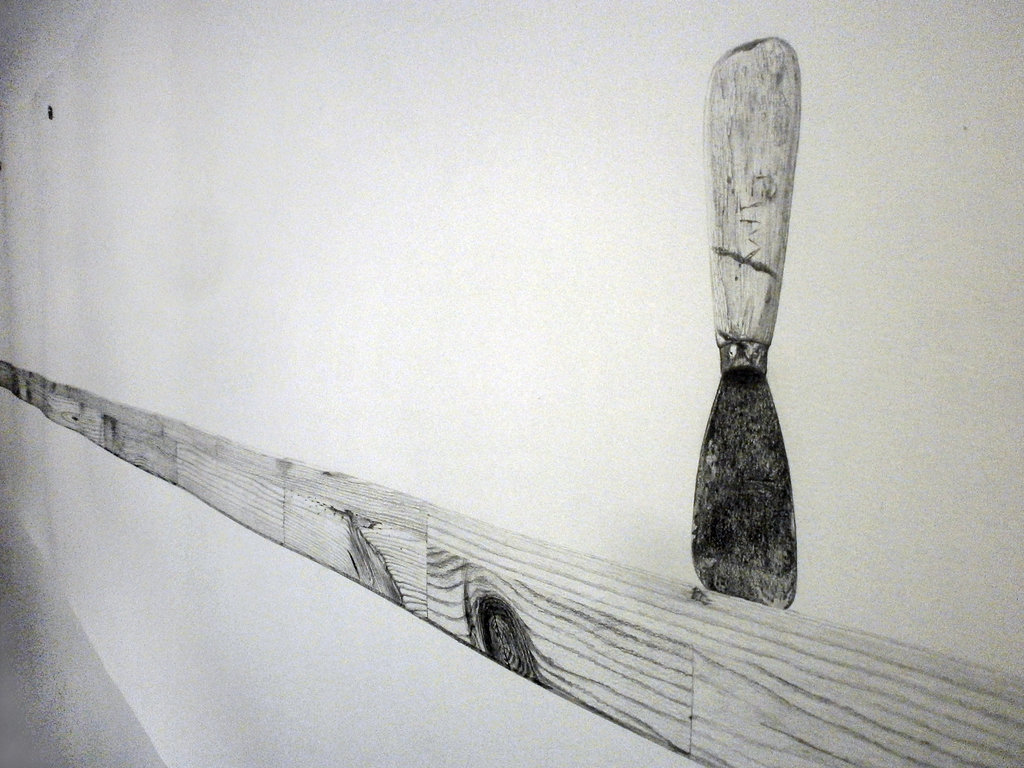 Torsten Richter, Board with Right Hand, 2011, graphite pencil drawing on paper, 75 x 350 cm. Courtesy of Robert Kananaj Gallery
Torsten Richter, Board with Right Hand, 2011, graphite pencil drawing on paper, 75 x 350 cm. Courtesy of Robert Kananaj Gallery
Hollis Alexis Baptiste, the only Toronto based artists in this show, also works with everyday object. For more than 15 years, Baptiste has been incorporating these objects of no significance, like plastic bottles or unusual shaped objects, to be part of his strange structures. Large plastic bottles become abstract compositions and detergent containers create a group of strange figures, “illegal aliens”, as he calls them. Baptiste paints some of them bright yellow or deep blue or even Halloween black and red. They are funny and scary at the same time, an out-of-the-real-world assembly of his ghostly journey.
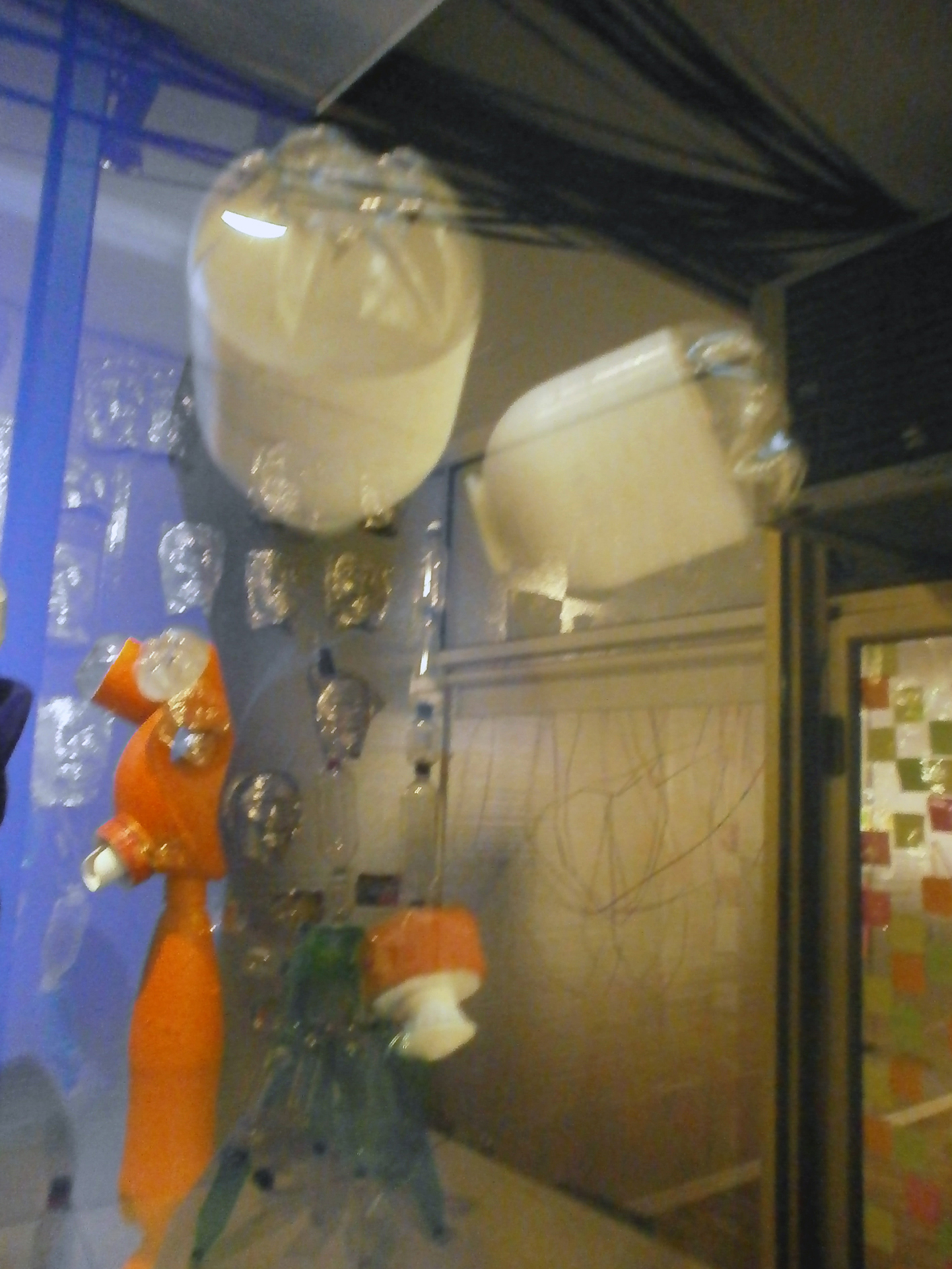 Hollis Alexis Baptiste’s installation. Courtesy of Robert Kananaj Gallery
Hollis Alexis Baptiste’s installation. Courtesy of Robert Kananaj Gallery
Luca Reffo’s from Milan, Italy brings artistic research to his paintings, rendering disquieting movie-like atmospheres, imitations of original stage-set photographs and vintage film frames into his paintings. Each event is portrayed as a still image, conveying a sense of anguish for dream-like situations often heavy with psychological references. The visionary aspect of his realistic images is further emphasized by an original and disturbing use of lighting.
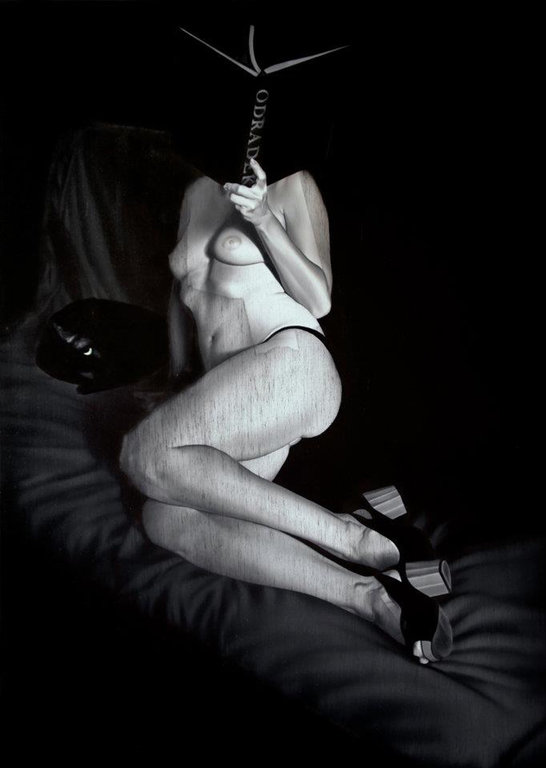 Luca Reffo, The Reader, 2010-2011, oil on canvas 50 x 70 cm. Courtesy of Robert Kananaj Gallery
Luca Reffo, The Reader, 2010-2011, oil on canvas 50 x 70 cm. Courtesy of Robert Kananaj Gallery
The exhibition is interesting itself and you can easily lose yourself in the details of the artworks. If you go there, I suggest that you talk to Robert Kananaj and listen to his enthusiastic comments about the Journey, the artists and their work.
Emese Krunák-Hajagos
*Exhibition dates: October 10 – November 23, 2013, Robert Kananaj Gallery, 1267 Bloor Street West, Toronto. Gallery hours: Tue – Sat 11 – 6 p.m.
